Restoring the Root Beer Barrel
This Douglas concession stand with a unique shape started serving hot dogs and root beer in 1952 but closed in 1978. Keep reading for the complete story.
This Douglas concession stand with a unique shape started serving hot dogs and root beer in 1952 but closed in 1978. Keep reading for the complete story.
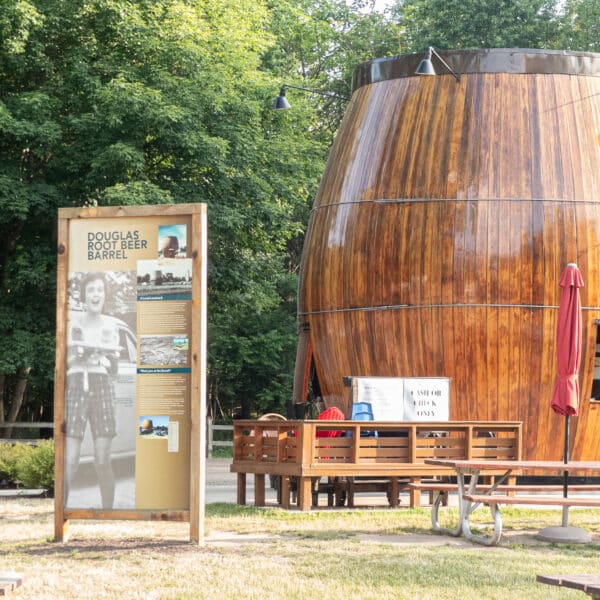
The Douglas Root Beer Barrel is a lovingly restored icon of Douglas history and culture. It’s a distinctive local landmark that takes us back to early Baby Boomer days when cars had long fins and lots of chrome, when root beer was more popular than cola, and when Saugatuck’s Oval Beach was already a prime summertime destination for both residents and tourists.
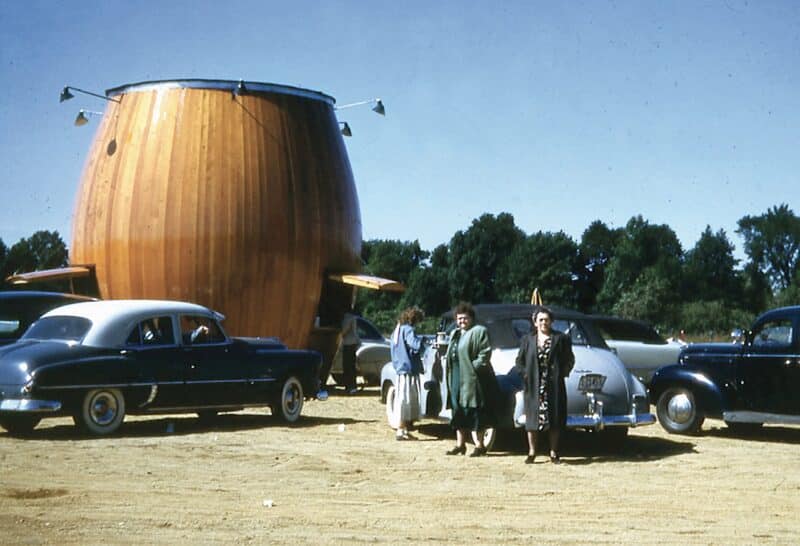 The story of the Barrel begins in Flint, Michigan, when two friends, Joe Decker and Harold Kelly, decided they could make their fortunes on the other side of the state by selling frosty mugs of root beer and foot-long hot dogs to people after a day at Oval Beach. They had the perfect spot on Center Street just east of Ferry. But they knew that an eye-catching gimmick would help lure people out of their cars. And so, hour by hour, stave by stave – 125 in all – this superb example of American roadside architecture came into being and opened for business in 1952.
The story of the Barrel begins in Flint, Michigan, when two friends, Joe Decker and Harold Kelly, decided they could make their fortunes on the other side of the state by selling frosty mugs of root beer and foot-long hot dogs to people after a day at Oval Beach. They had the perfect spot on Center Street just east of Ferry. But they knew that an eye-catching gimmick would help lure people out of their cars. And so, hour by hour, stave by stave – 125 in all – this superb example of American roadside architecture came into being and opened for business in 1952.
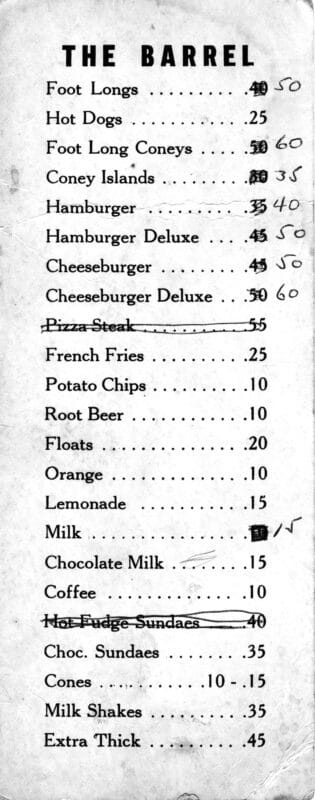 “Meet you at the Barrel!”
“Meet you at the Barrel!”During its two-decade heyday, the Barrel was a thriving hub of local comings and goings. Stopping at the Barrel was part of the ritual of going to the beach. For customers who would rather not get out of their cars, carhops (“the Barrel girls”) would bring your food to you.
A number of owners each invested in the success of the Barrel. First, a small cottage was attached as living quarters for the owner-manager during busy summer months, and then a miniature golf course was added. Originally varnished, the Barrel was later painted and steel hoops wrapped the structure in order to maintain its shape.
The menu expanded and a small gift shop opened. Some claim that the Douglas Barrel introduced the first foot-long hot dog. In 1964, the Gallas family introduced the Coney Island Chili Dog. But the basic value proposition of the Barrel always stayed the same: affordable, appealing meals for beachgoers, served in a novelty setting.
In 1974, the Barrel was open for just a few holiday weekends. In the years following, although acquired by several new owners, it never reopened.
After the Barrel ended operating as a drive-in, it sat unused and slowly deteriorating for 25 years. The property owner was ready to demolish it. And then, in 2010, its destiny changed.
Local history buffs were keenly aware of the important role the Barrel had in the community’s development as a summer destination, as well as its significance as a surviving example of American roadside architecture. The Saugatuck Douglas Historical Society (now the Saugatuck Douglas History Center) eagerly intervened to rescue the Barrel, purchasing it for $1, and helped guide the project.
The project began with an evaluation by experienced woodworkers and a professional boat restorer. With their assurance that the Barrel could be restored, a “Save the Barrel” campaign quickly mobilized. More than $11,500 was raised, including contributions from “stave savers” who each gave $150 to fund the preservation of a single stave.
Restoration of the Barrel began in the summer of 2011. After its lead paint coating was removed, it was dismantled and moved to a garage. Thanks to more than 600 hours of volunteer labor, 120 wood staves were repaired, sanded, and sealed with six coats of marine varnish. New staves were crafted to replace those damaged beyond repair. Almost rusted through, the Barrel’s steel base ring needed to be replaced. Students in the Saugatuck High School Industrial Arts Program fabricated a new ring and steel support structure.
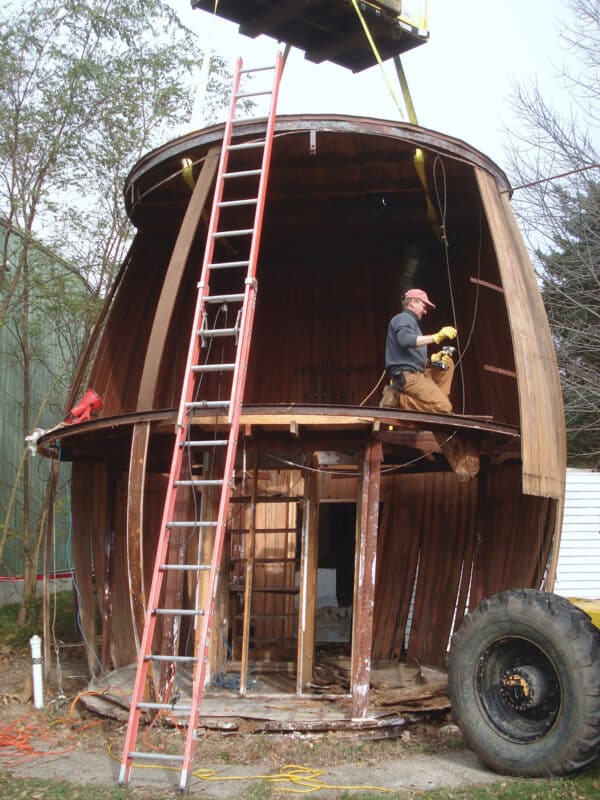 |
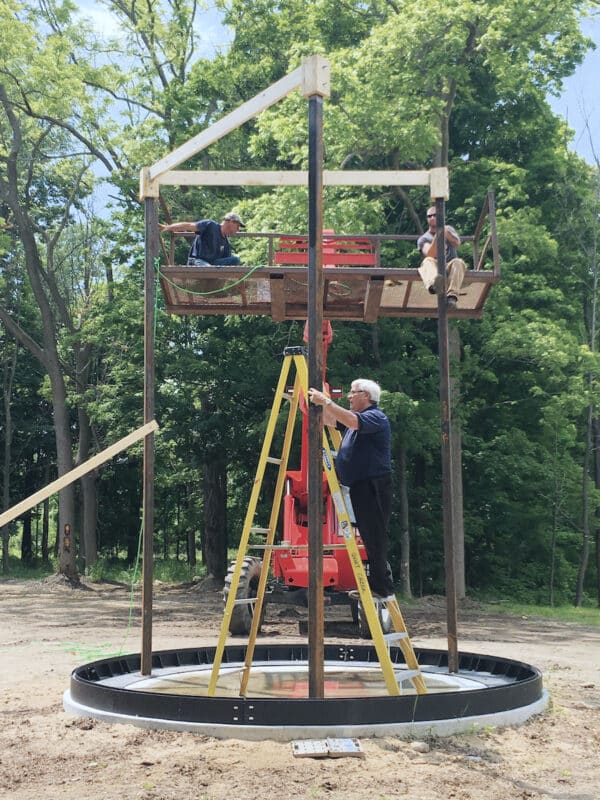 |
 |
 |
In June 2015, ownership of the Barrel officially transferred from the Historical Society to the City of the Village of Douglas. This site became its new home and reassembly was completed here in 2016.
Today, thanks to community investment and the contributions of countless caring individuals across generations, the Barrel lives on as an iconic Douglas landmark.